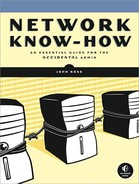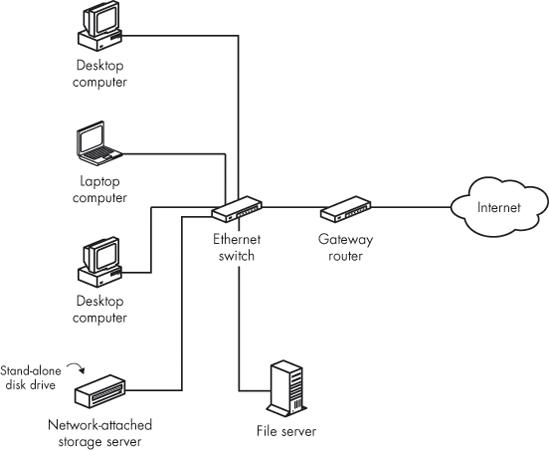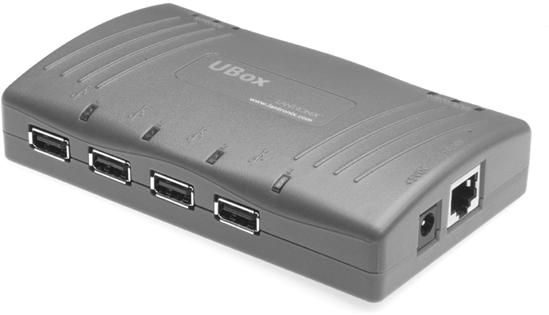A network-attached storage (NAS) device is a dedicated computer—without a keyboard or display screen—used as a network file server. In the small business or home networks that many readers of this book are likely to have, one or more NAS disk drives can be an entirely adequate alternative to a more expensive and complicated network server.
For all practical purposes, a NAS drive is just a disk drive that connects to the network through an Ethernet port. Several disk drive and network equipment manufacturers offer purpose-built NAS devices, including complete hard drive assemblies and network storage enclosures for IDE or SATA hard drives. Some NAS devices have both Ethernet and USB ports, so you can use them with either a direct connection to your network or an external drive connected to a computer with or without a network link. Figure 9-3 shows a network with a stand-alone disk drive operating as a NAS device.
A NAS server could also be a regular computer, with or without a keyboard and screen. If you already have a spare computer to use as a server, the FreeNAS version of FreeBSD, shown in Figure 9-4, could provide all the services you need for a file server operating system. FreeNAS is designed for remote configuration and operation, and it's relatively easy to set up and use.
To add one or more stand-alone USB disk drives to your network as file servers, consider using a USB device server, such as the Lantronix UBox 4100 shown in Figure 9-5. The server connects directly to the network through an Ethernet cable, and each disk drive or other USB device connected to the server appears as a local device on every computer connected to the network. Similar devices are also made by Silex Technology, including a wireless USB device server that connects to the network through a Wi-Fi access point.
Figure 9-5. The Lantronix UBox connects external disk drives and other USB devices directly to your network.
Photo courtesy of Lantronix
Whether or not you're using Macintosh computers in your network, Apple's AirPort Extreme product can be an inexpensive alternative to a full-size file server. Along with its functions as a DSL or cable gateway router, an Ethernet switch, and a Wi-Fi base station, the AirPort Extreme also has a USB port that can connect an external hard drive directly to your network. To use more than one external hard drive, connect them to the AirPort Extreme through a USB hub. Figure 9-6 shows the rear panel of an AirPort Extreme.
Photo courtesy of Apple




